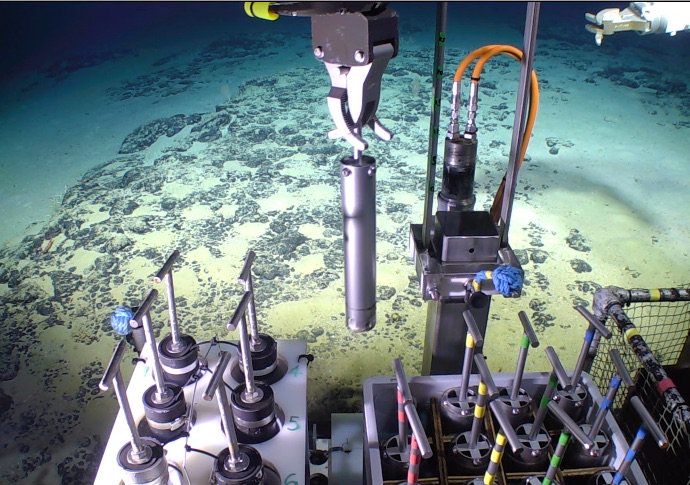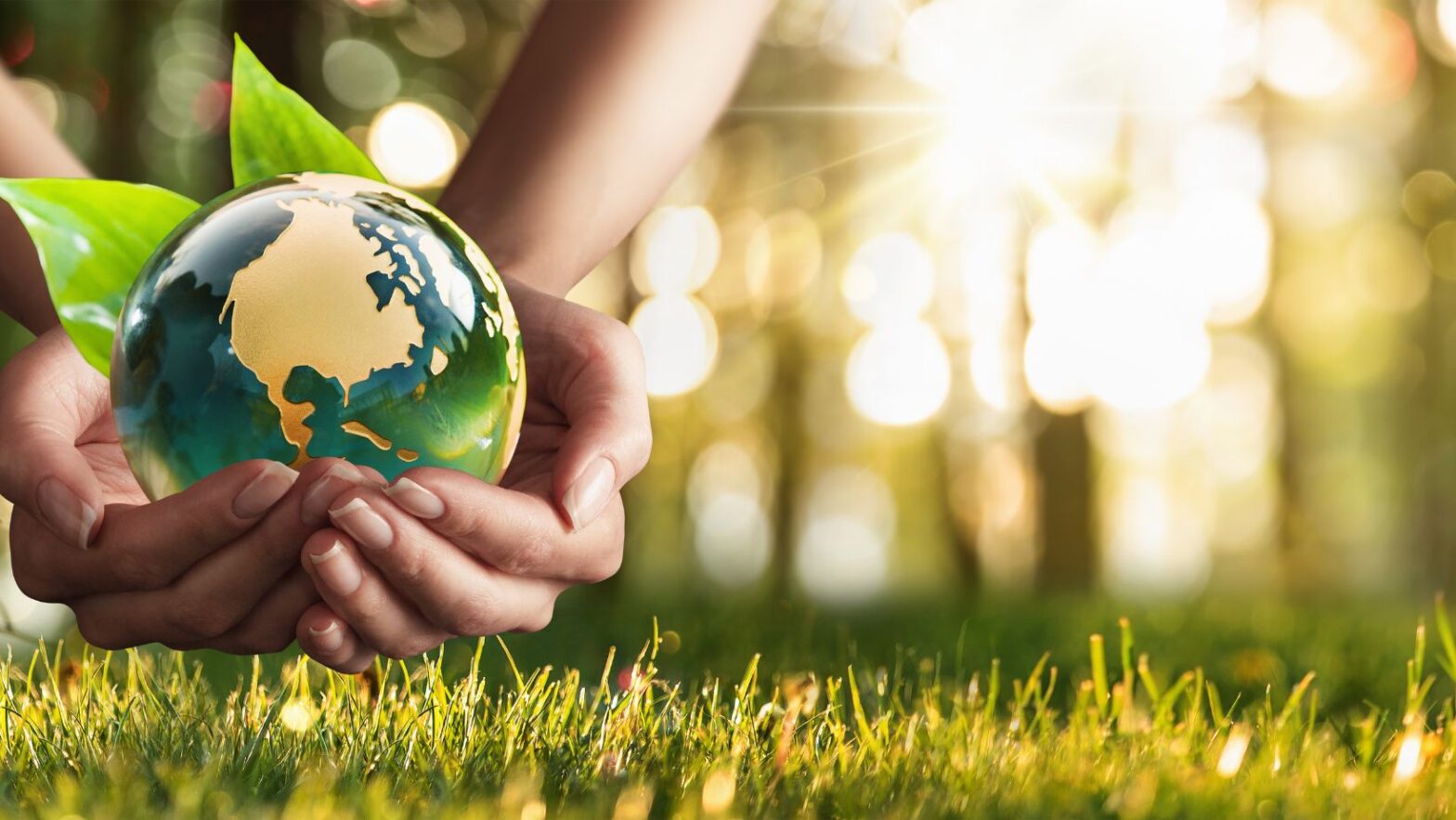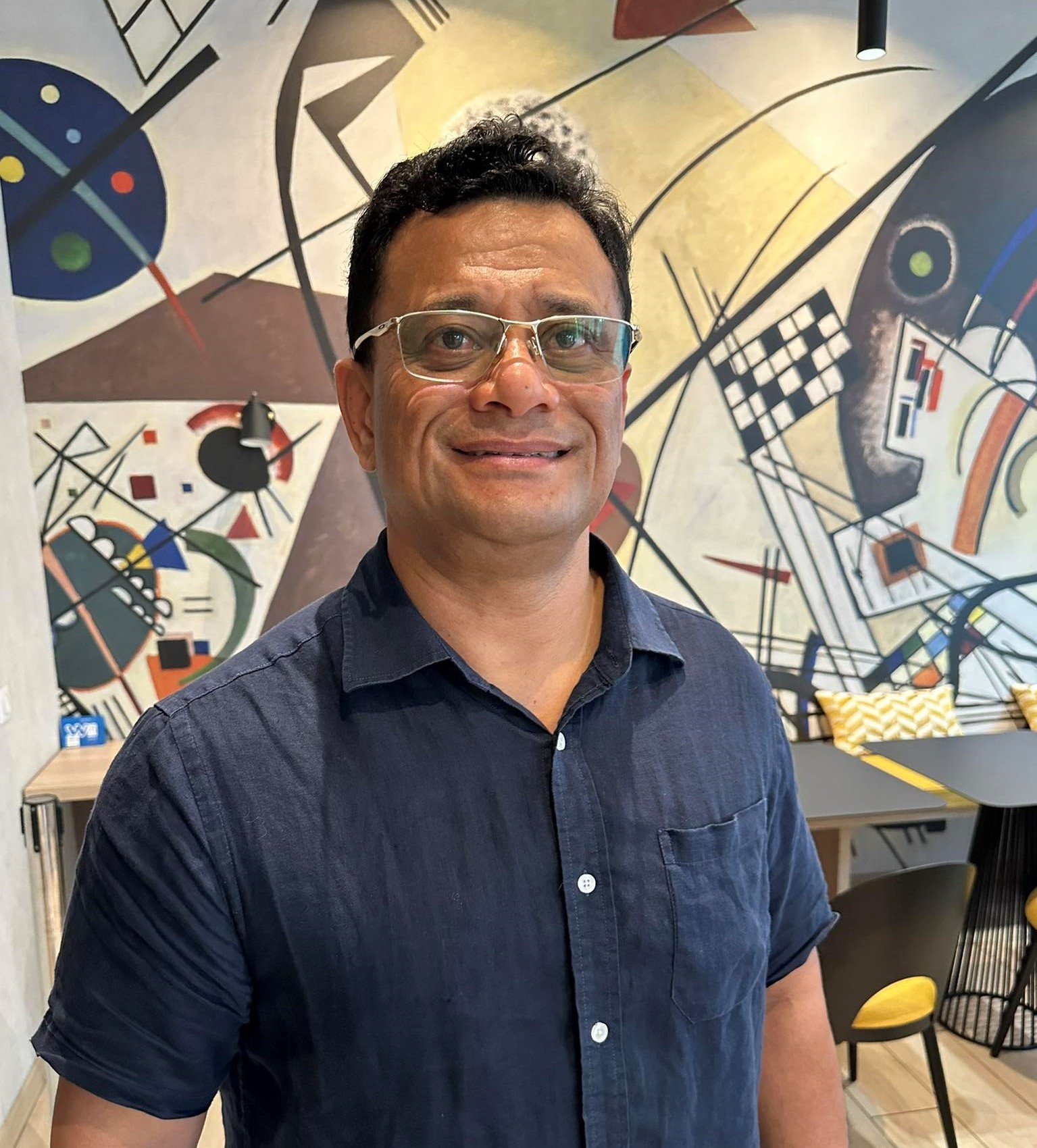Mining deep areas of the ocean to gather rare metals for electric car batteries and other green technologies is attracting cash-strapped Pacific island governments.
Exploration is now under way in the waters around the Cook Islands – or ‘Avaiki Nui, as the islands are known among those who reject its colonial name – for sites with potential for deep-sea mining.
While the country’s leaders are enthusiastic, there are many who say it’s simply extractive colonisation all over again.
Liam Koka’ua, who has roots in both ‘Avaiki Nui and Aotearoa, talks to Teuila Fuatai.
At COP27 last year, my nation’s prime minister Mark Brown told the world how ‘Avaiki Nui is leading the way to a greener future.
He talked about our 15 islands “walking the talk” as we live with the impacts and threats of climate change. We have 13 islands on solar power, and the goal is to have the remaining two converted in the next two years.
He highlighted our commitment to net zero emissions by 2040, and our focus on building resilient infrastructure – increasingly necessary as the world around ‘Avaiki Nui and Te Moana Nui a Kiwa refuses to seriously cut emissions.
Then he said it was no one else’s business what we do in the waters around our islands.
He was referring to increasingly loud calls for a moratorium on deep-sea mining, which he finds hypocritical because they most often come from large nations responsible for the bulk of climate change emissions.
“The very countries that destroy our planet through decades of profit-driven development, and who to this day continue their profit-driven actions, and neglect their climate change responsibilities, are making demands for a moratorium on our ocean,” Mark Brown told the conference.
“It is patronising and it implies that we are too dumb or too greedy to know what we are doing in our ocean.”
In the last five years, the deep-sea mining industry has taken off, driven by global demand for greener technologies. In ‘Avaiki Nui, there’s strong support for this developing industry.
Since the 1960s, we’ve known that the seabed around ‘Avaiki Nui has rich deposits of polymetallic nodules. The nodules, about the size and shape of potatoes, cover the seabed in vast areas and contain valuable minerals such as cobalt, manganese, copper and nickel which are used to make smartphones, electric vehicle batteries, solar panels, and other high-tech applications.
Big mining companies refer to the nodules as a “battery in a rock” because they have everything a new battery needs.
But, until now, seabed mining to harvest these nodules has been limited because effective extraction technology hasn’t existed. That’s why no large-scale mining occurred when research and mining companies first discovered the mineral-rich areas.
Instead, these minerals have been mined from land-based sources. But some say those sources are being exhausted, especially as we haven’t been recycling what’s extracted.
So, many companies are now looking to the seabed. Increased demand, coupled with improved mining technologies, means that our ocean floor is now a viable commercial source.
Mark Brown believes my islands of ‘Avaiki Nui stand to gain. He thinks by entering commercial mining agreements, we’ll contribute to a greener and more sustainable future while tapping into a rich income stream.
His interest is essentially economic. He looks at the natural resources on our ocean floor and sees them offering benefits like diversifying our economy, hard cash for big infrastructure improvements, education funding for scholarships, and a national investment fund to maximise the mining-related cash.
These are all worthy and valid things to want. But at the heart of it, mining is extraction for the sake of profit. It tramples on the very things that make us Indigenous, that tie us to our land and moana, and to our ancestors and future generations.
We know from mining land-based sources that it’s a practice where there’s no respect for the relationships between people, the land and ocean, no balance or re-setting of actions, no restoration of what’s stripped out, and no reciprocity or giving back.
‘Capitalist way of operating’
It boils down to extracting the resources there and then, and moving on to the next frontier. It’s a capitalist, western way of operating.
The existing research on mining the deep sea raises red flags for our moana and sea life. And that’s just from what the studies already say.
There are still so many unknowns around the harms of seabed mining because of our limited knowledge of the ocean’s extreme depths.
The nodules sit far below the surface, usually about four to six kilometres down. They also differ in composition depending on where they are. For example, in the deep ocean around ‘Avaiki Nui, the nodules are rich in cobalt, one of the main minerals used in lithium-ion batteries for electric vehicles.
Right now, the most efficient method for extracting the nodules involves dropping a rover-type vehicle down to the ocean floor to vacuum them up in massive quantities. In our waters of ‘Avaiki Nui, there’s estimated to be about 10 billion tonnes of nodules.
Once the nodules are vacuumed up, the machine shoots them up a pipe to a processing ship. Here the nodules are cleaned to remove silt and salt water, before being taken to the shore where the minerals are extracted. Back on the processing ship, the left-over sediment is pumped to about midway down the water column before being released.
So far, there’ve been problems identified at each stage of this process.
At those extreme depths, the whole seabed is pretty much sand, and the nodules are often the only solid surface, where they act as anchors for wildlife. Over billions of years, sea life has evolved to live on and around them. These range from microscopic organisms to sponges and other species that feed on those that settle on the rocky surface.
It’s a whole interconnected ecosystem. Removing the nodules cuts a key piece of that ecosystem out. Not only that, when the nodules are removed, all the organisms living on and around them are also sucked up by the rover.
Unlike a forest, or even a coral reef, the nodules can’t regenerate or heal themselves within decades or even generations. They start off as a tiny bit of marine debris, perhaps something hard like a shark’s tooth. Little by little, minerals within the seawater are attracted to the solid object in minuscule amounts. The nodules form over millions of years. They are finite and non-renewable.
When I think about what that means, and the place of these nodules within the moana, I think about the lives of my tūpuna and how they lived, and the balance they successfully kept with their natural environment by managing what they took with what they gave back.
Our tūpuna were able to clearly see the impact they were having because they managed their natural resources on a near-daily basis, and they could reduce their harvesting accordingly, or even place a rā’ui (ban) if needed. The deep sea is not the same.
Marine life at risk
In Rarotonga, we’ve already polluted the lagoon with agricultural chemicals and septic waste, and most of our wetlands have been filled for commercial development. These practices go against the balance and respect our tūpuna had for the ʻenua and moana.
Our eagerness to follow this same path with mining of the moana shows how far we’ve shifted from our beliefs as Māori people, how disconnected we’ve become as tangata ‘enua, how isolated we are from the repercussions of our behaviour. We seem to be moving further and further away from how our tūpuna respected and understood the interconnectedness of the world around them.
Almost everywhere you turn in deep-sea mining, there is harm to other living organisms. For example, at that depth underwater, species have evolved to live in 100 percent darkness. When a rover vehicle hits the seafloor with lights blazing to illuminate its path, there’s the potential to damage everything that’s never been exposed to light before.
Getting rid of the sediment from the nodule cleaning process has also been identified as potentially damaging. The sediment is pumped back into the water at a much shallower depth than the nodules were extracted from. When it eventually settles back on the seabed, many of the organisms, sponges or marine life living at those depths aren’t used to it. They’ve never had to cope with layers of sand or silt landing on them because their environment is usually very still. There’s a risk they could be suffocated, or inhibited from generating energy or feeding.
Recent research also looks at the potential effects of deep-sea polymetallic mining on larger marine organisms like whales, dolphins, sharks and migratory fish. These are the animals that keep the balance in our food chains and in the fish we rely on for subsistence. Many of them use sonar for their feeding and migration habits. The research showed how noise from mining machinery and vessels disrupts the sonar which is integral to how they feed, migrate and reproduce.
It’s possible we’d miss those impacts because we wouldn’t see them. These are animals that travel around the ocean and often in deep waters. Sediment plumes could spread several kilometres by ocean currents. Machinery noise also travels, so the potential damage isn’t limited to specific mining areas in the ocean.
Deep-sea mining overrides our inherited knowledge of the ocean as our life source.
I don’t like to romanticise about how we’re people of the moana. We’re definitely people of the ‘enua too. But we couldn’t have survived on our islands without the moana and our reef and ocean fish.
Now, after generations of depending on the ocean, we’re behaving in a way that causes permanent harm to it and other living organisms there. It’s a disconnection from the world around us that clashes with our Indigenous beliefs and worldview.
Deep-sea mining permanently removes habitats from the ocean. It’s reasonable to expect this to have a cascading effect, one that goes far beyond those who are making the decisions right now.
As Indigenous peoples, we should be connected to our past and future, and understand the role of the environment in that. We should have an idea of how our tūpuna lived and why they lived that way, and also the kind of life our actions will create for our descendants.
Of course, we’re not the only people from Te Moana Nui a Kiwa supporting the development of deep-sea mining. Nauru, Tonga, and Kiribati have agreements with the Canadian mining company The Metals Company for exploratory mining in the Clarion Clipperton Zone, an area of deep ocean lying north of ‘Avaiki Nui, between Mexico and Hawai’i.
The zone is bigger than India’s total land area and is outside any one nation’s control. Instead, it’s managed by ISA (the International Seabed Authority), a UN organisation. ‘Avaiki Nui also has an exploratory licence for a block inside the zone.
So far, mining activity in the Clarion-Clipperton Zone has been limited to exploration because the ISA is yet to formally adopt a mining code. But, keen to get started, Nauru has managed to trigger a mechanism in the UN rules to enable it to begin commercial-grade mining in the area after two years. It effectively means large-scale mining in Te Moana Nui a Kiwa could begin in July this year.
Echoing the arguments of our government in ‘Avaiki Nui, Nauru’s president Lionel Aingimea frames the move as a way for Nauru to benefit from contributing to a greener future.
“This process,” he has said, “will allow Nauru and other developing countries to participate in a new industry, accessing valuable resources in light of a historical context that far too often deprived developing countries from reaping the benefits.”
What’s ironic is that much of Nauru is now wasteland after its land was stripped for phosphate in the first half of the 20th century. In the second part of the century, it lost the wealth generated by that mining through a series of bad financial decisions made by the government.
Deaf and blind to such lessons, in ‘Avaiki Nui we’re plunging ahead.
In February last year, the government issued licences for the exploration of seabed mining in our waters to three international mining companies: Cook Islands Cobalt, Moana Minerals, and the Cook Islands’ Investment Corporation Seabed Resources.
The licences are for five years. After that, the companies can reapply for permission to begin commercial operations.
The companies are required to produce research showing they’ll use safe mining practices, but there’s no independent verification required. They’ll be saying: “Look, we think we can mine these things sustainably,” and no one will seriously test that.
What we need is third-party, objective research undertaken over a period of decades before we can even to begin to claim to understand these deep-sea ecosystems.
These huge corporations have already established offices in Rarotonga. They’ve invested in mining and research vessels, and they have exploration agreements. So, even if our government reversed its pro-seabed mining stance, I expect it would trigger expensive court action.
We’ve seen this happen elsewhere.
The Mexican government is now embroiled in legal action with a U.S company, Odyssey Marine Exploration, after rejecting the company’s permit for phosphate dredging in its waters.
Odyssey Marine Exploration, which also has a stake in one of the mining companies in ‘Avaiki Nui, says the Mexican government has been given ample information showing its dredging methods and plans are environmentally safe. It’s seeking US$3.5 billion in compensation.
All these reasons are why I think a moratorium on seabed mining is essential, and why I applaud other Pacific nations like New Zealand, Sāmoa and Fiji for supporting those calls.
In October last year, New Zealand’s foreign affairs minister Nanaia Mahuta said her government supported a conditional moratorum on deep-sea mining in international waters.
Nanaia said we simply didn’t know enough about the environmental impacts of deep-sea mining, and more research was needed before any large-scale mining could be considered.
Te Pāti Māori co-leader Debbie Ngarewa-Packer has also spent years working to stop seabed mining activity here in Aotearoa, particularly around Taranaki (where she’s from) as well as around the world.
When I hear Nanaia and Whaea Deb advocating for a different path, it gives me hope. Deep-sea mining affects all Indigenous peoples who depend on Tea Moana Nui a Kiwa for physical, cultural and spiritual sustenance. We can’t disregard those Indigenous voices outside of our islands.
Rooted in colonialism
I hear Māori in Aotearoa telling us Māori in ‘Avaiki Nui that: “Hey, you’re out of line” over our government’s desire to mine the deep ocean. We should be listening to our whanaunga.
It’s important to talk about deep-sea mining on our own Indigenous terms, not just economic ones. The lowest depths of our moana, like the highest peaks of our maunga, are where our atua dwell. For that reason, they are tapu places.
These are sacred relationships that have many layers. The peaks of our maunga, for example, are where our rainfall collects among our oldest forests, before being gradually filtered down into the lowlands. Maintaining tapu in these areas means our drinking water remains clean.
Likewise, the deep sea is the most fragile part of our ocean. It’s a carbon sink and habitat for our earth’s least understood creatures. Our tūpuna lived by those beliefs and a number of atua were known to reside in those depths.
But over generations of colonisation, we’ve lost that connection and way of life. It’s the missing layer when we’re evaluating and weighing up the proposals. It’s also knowledge and understanding that we can access right now, without needing to wait for decades-long research to be conducted.
When we don’t listen to those beliefs, we’re not really seeing the full picture of risks for the moana, for future generations, and how our tūpuna understood and respected the world around them.
Climate change is a problem caused by extraction, caused by colonialism, caused by capitalism. The deep-sea mining industry is attempting to mitigate it by opening up yet another frontier of extraction.
Collectively, as people of Te Moana Nui a Kiwa, we need to see it for what it is and act against it.
This analysis was written by Liam Kokaʻua, originally published at E-Tangata/RNZ PACIFIC on 04 April 2023, reposted via PACNEWS.




